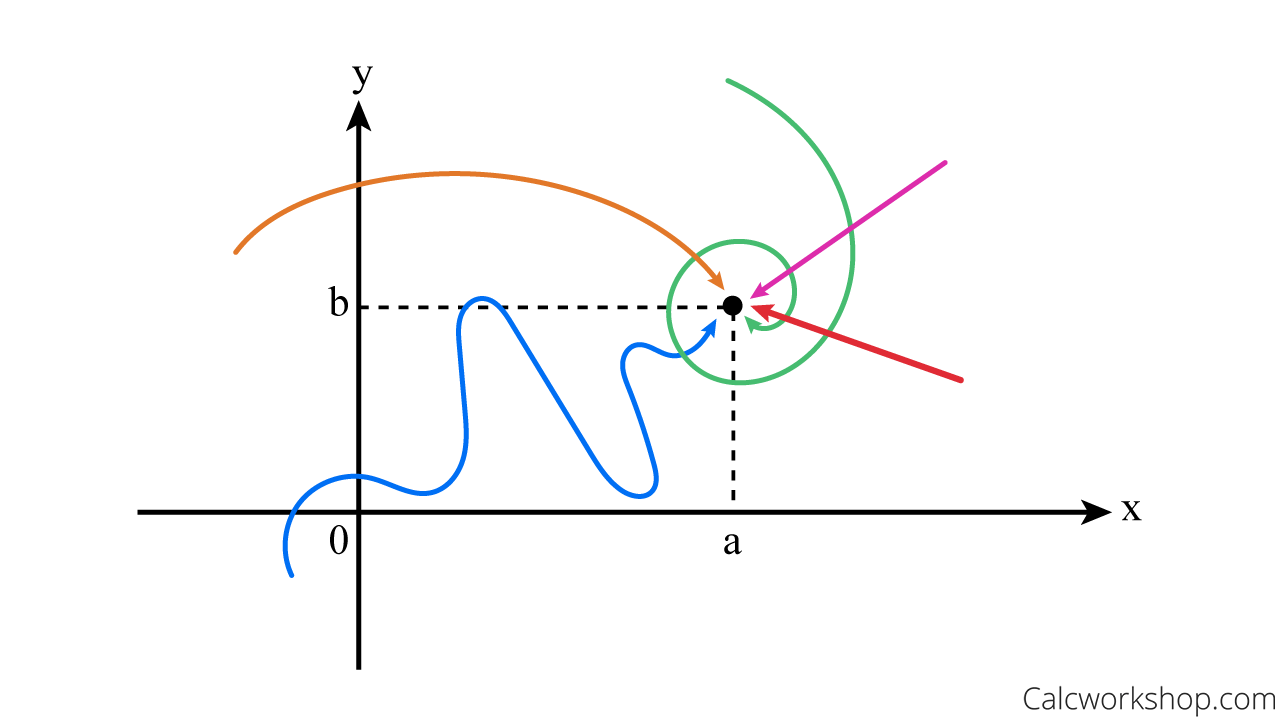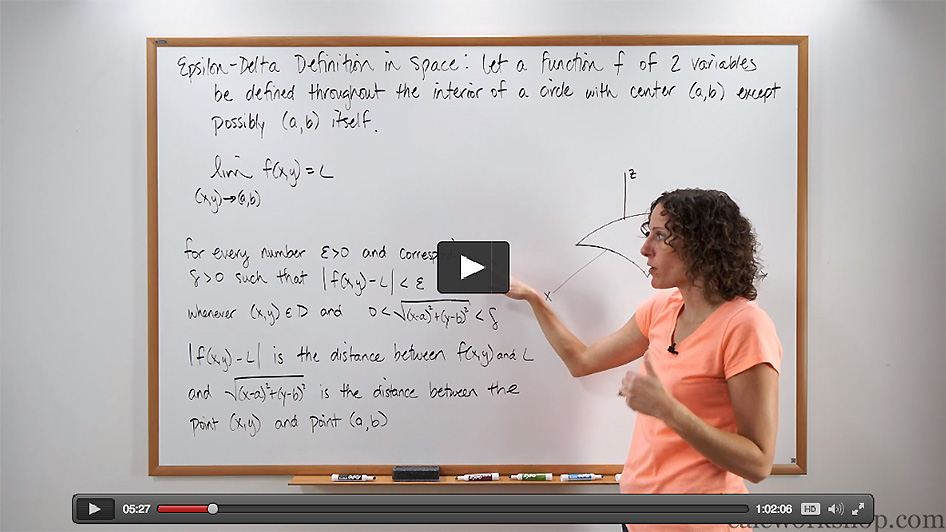How do you find the multivariable limit?

Jenn, Founder Calcworkshop®, 15+ Years Experience (Licensed & Certified Teacher)
And are limits for functions of several variables similar to finding limits in calculus 1?
There is some similarity between defining the limit of a function of a single variable versus two variables.
But there is a critical difference because we can now approach from any direction.
What?
Single Variable Vs Multivariable Limits
Recall that in single variable calculus,
In other words, there are only two paths:
- One-Sided Limits
- Two-Sided Limits
But, for a function of two variables, things are a bit more complex.
Why?
Because we can let

Limits Of Multivariable Functions
Paths Approach
Does this mean we need to evaluate the limit from every possible direction?
Heavens no! That would be exhausting and quite impossible.
Instead, we simply employ a new strategy called the “paths” approach!
todo: we need to reformat the following
How To Find The Limit Of A Multivariable Function – With Steps
Keeping in mind what we already know about limits…
…let’s go through the rules for limits of functions of several variables.
- Plug in the given value. If you get a tangible value, then this is your solution.
- If you get an indeterminate form, then try to simplify and re-evaluate – do NOT use L’Hopital’s rule, as L’Hoptial’s rule only applies to functions of a single variable.
- If still you get an indeterminate form, then the limit does not exist and must be verified using the two-paths approach.
Let’s look at two examples to see how this works.
Example #1
Find the limit if it exists, or show that the limit does not exist.
First, we will plug in our point and simplify.
Because we found a tangible number, the limit exists, and we know that as
approaches , then approaches -10.
Example #2
Find the limit if it exists, or show that the limit does not exist.
Let’s plug in our point and simplify.
Because we have an indeterminate form, and we cannot simplify the function further, we will use paths to show the limit does not exist.
First, we must choose a particular path by letting
remain untouched and , such that:
Next, we must choose a different path, one where
. Let’s allow to remain untouched and , such that:
Now, because our first path yielded a value of “1” and our second path yielded a value of “2”, and
we have obtained different limits along different paths, thus showing the limit does not exist.
Cool!
And don’t worry, we will work through numerous examples in the video below, and I’ll show you some tricks for how to apply the two-paths method and choose the best “paths.”
In fact, you will find that it may even be beneficial to use polar coordinates to find the limit.
Continuity Of Multivariable Functions
Okay, but why does the paths approach work?
Because the definition of a limit of a function of two variables only refers to the distance between
This means that if the limit exists, we can use it to determine continuity.
A function
This means that a surface that is a graph of a continuous function has no holes or breaks, and we use the properties of limits to help us prove it.
Example #1
For instance, let’s determine the largest set on which the function
Well, all we have to do is determine the domain of the function, and since it is a rational function, we know that we can’t divide by zero, so
Therefore, the domain of
is , which means is continuous on except along the parabola .
Example #2
Let’s look at another example.
Determine the largest set on which the function
Well, we have a square root function, and we know that we can’t take the square root of a negative number. Which means the radicand must be positive. So
. Thus, the domain of
is , which means is continuous on and above the .
Perfect!
Together we will expand upon our knowledge of limits and continuity. We will use the delta epsilon proof to discover how to evaluate a limit of a function of several variables and develop the means for providing a limit that does not exist with the two-paths method. And we will learn how to determine the largest set on which a function of several variables is continuous.
It’s going to be fun, so let’s jump right in!
Video Tutorial w/ Full Lesson & Detailed Examples (Video)

Get access to all the courses and over 450 HD videos with your subscription
Monthly and Yearly Plans Available
Still wondering if CalcWorkshop is right for you?
Take a Tour and find out how a membership can take the struggle out of learning math.